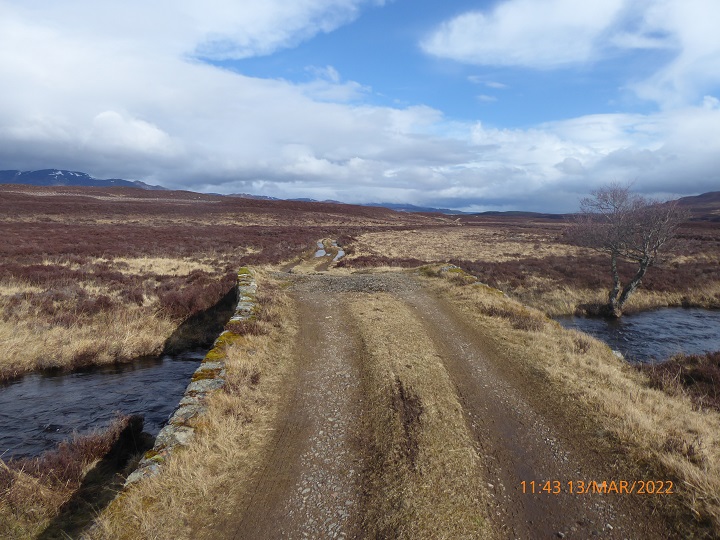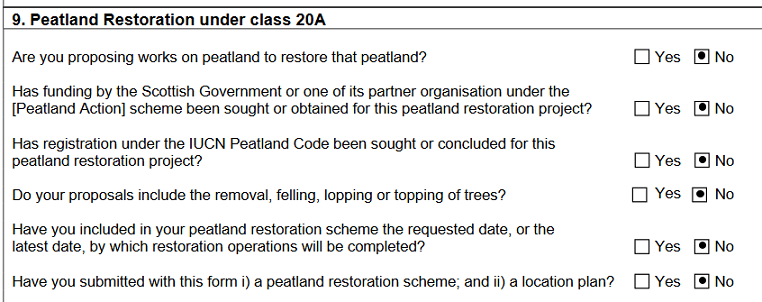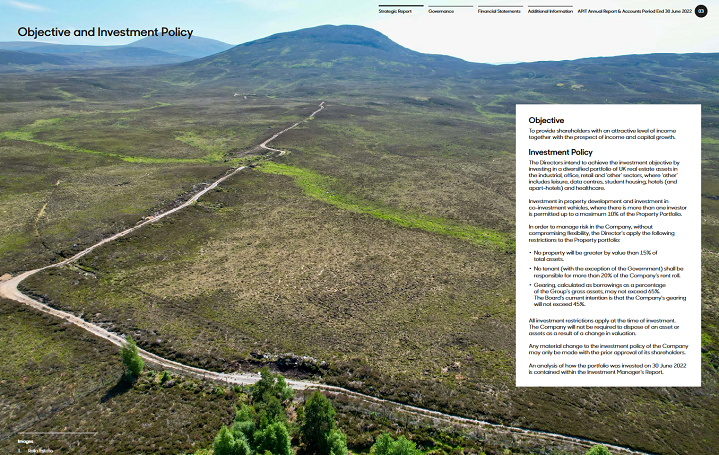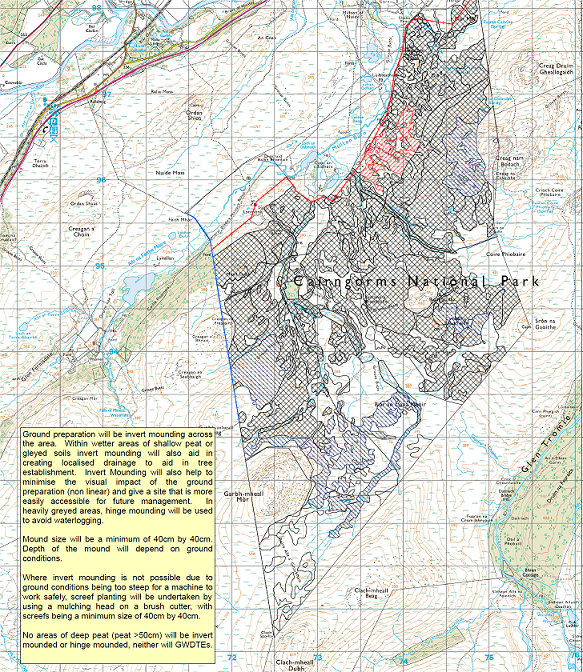On 9th May Highland Council issued a decision on the proposals submitted on behalf of ABDN to upgrade the track to Far Ralia and construct an alternative to the Wade Bridge (see here). The way the proposals have been dealt with and the decision itself raise serious questions about how the planning system in the Cairngorms National Park operates.
What forestry road?
The Highland Council decision notice states the proposals are for a “Forestry Private Way” and under the “informatives” state they are a permitted development. Such developments, to create or upgrade agricultural and forestry roads, come under the Prior Notification system which requires Planning Authorities to be notified of proposals. The Planning Authority then has the power to attach conditions to the permitted development but not to refuse it.
Highland Council’s decisions to treat ABDN’s proposals as a Prior Notification was wrong because there is as yet no forestry at Far Ralia. Indeed Scottish Forestry is currently consulting on proposals from Akre Trees and SAC (Scottish Agricultural College) Consulting on behalf ABDN to create new woodland and could refuse this. In treating the proposals as a Prior Notification Highland Council have therefore put the cart before the horse.
That mistake may be a consequence of the false claim made by SAC Consulting in the revised application form for the road they submitted on 7th March:

If Scottish Forestry have already approved planting of 842 hectares of woodland at Far Ralia that would mean their current consultation, which opened on 4th May and closes on 2nd June, which concerns plans to plant 842ha of land on the estate with native trees is a sham. Does Highland Council know something the public don’t or did they mistakenly trust the developer and fail to check the facts?
Repair or upgrade?
The original supporting information (23_00283_PNO-SUPPORTING_INFORMATION-2927035) for the Prior Notification has been removed from the planning portal. What it described were clearly proposals for an upgrade to the existing road:
“The existing road structure, is approx. 2.4 m wide. Useable hard materials from the centre and sides of the road will be used to fill in established running tracks and allow water run off. This will ensure the stone fits the location and is fit for purpose. This will be done by re-profiling the surface to create a gently cambered running track with shallow drainage ditches on either side. Target width of 3.5 m for the overall track is forecast (track with ditches). Vegetation will be reinstated on verges as required.”
In the revised application the width of the current road is described as 2.8m:

How did the width of the road increase from 2.4 to 2.8m in just two months?
 The fact that the road on the Wade bridge is still described as being 2.4m wide and the road beyond matches it suggests that this claim is totally wrong. Highland Council, however, appears to have fallen for this misrepresentation of the facts and as a consequence decided to treat the works on the road not as an upgrade but as repairs which it was then able to exclude from consideration:
The fact that the road on the Wade bridge is still described as being 2.4m wide and the road beyond matches it suggests that this claim is totally wrong. Highland Council, however, appears to have fallen for this misrepresentation of the facts and as a consequence decided to treat the works on the road not as an upgrade but as repairs which it was then able to exclude from consideration:
“The agent has supplied details of the works proposed to the existing tracks and no upgrading or increasing of width of the tracks are proposed, only the finish to the track surface. These works are not considered to be part of this Prior Notification and will be treated as repairs to existing tracks.”
Again, Highland Council really should have independently verified the situation on the ground or, if they did not have the resources to do this, asked the Cairngorms National Park Authority to do so.
A 2.8m wide road is narrower than the original 3.5m proposal but conveniently just broad enough to enable heavy forestry machinery to be transported in to Far Ralia. Instead of the Prior Notification being about “4460m of track from the at Millton of Nuide to the ford at Allt Ghiubhais”, the diversion of the road by the Wade Bridge and a ‘light upgrade’ to a further 1530m of track, its scope has been reduced to a short length of new track either side of a replacement bridge.
The consequence of this change in scope is that there are no conditions in the Decision Notice governing the quality ‘repair’ works to over 6km of track and no easy means for Highland Council to prevent ABDN extending the sections of track that are currently less than 2.8m wide.
By treating what is proposed as repairs and not an upgrade, Highland Council has opened the door for ABDN to upgrade the whole length of road. It will be very surprising if the central vegetated strip, which reduces the landscape impact of the road, survives the repair works.
ABDN’s reasons for upgrading the road
When the proposals to upgrade the road were first lodged, it appeared this might be not just for “forestry” purposes but to enable access for diggers to restore degraded areas of peatbog on the estate, including infilling drainage ditches. The revised application, however, states that ABDN has no intention of doing so:

This raises some serious questions about ABDN’s conservation credentials because, as pointed out in a previous post, the upper section of the Ralia road has caused significant damage to a large area of peat bog and should be removed:

It is a shame that ABDN and its consultants’ interest in carbon offsetting and nature conservation are so limited.
The only reason for the track upgrade therefore is to bring in machinery to plant trees. The plans currently being consulted on by Scottish Forestry show that Akre Trees and SAC are proposing to blanket almost all the land at Far Ralia which is not covered by peat over 50cms deep with inverted mounding created by diggers.

Inverted mounding is a destructive practice which releases significant quantities of carbon from soil and peat into the atmosphere. Research indicates that the carbon released is far more than can be absorbed by new woodland for 30-40 years. In accepting the Prior Notification which appears to have been designed to enable planting machinery to be taken to Far Ralia, Highland Council have not only helped pre-empt the outcome of Scottish Forestry’s consultation on ABDN’s plans (which I will consider in a further post), they have also in the short to medium term helped undermine the Cairngorms National Park Authority (CNPA)’s attempt to reach net zero.
This failure in my view is not primarily Highland Council’s fault. They are not resourced or geared up to consider cases like this. The public interest question is why the CNPA, having decided to call-in -in ABDN’s Prior Notification did an about turn and left the decision to Highland Council? In doing so they have been responsible for yet another hill track and conservation debacle.
2 Comments on “ABDN’s “forestry” road at Ralia – the planning debacle”